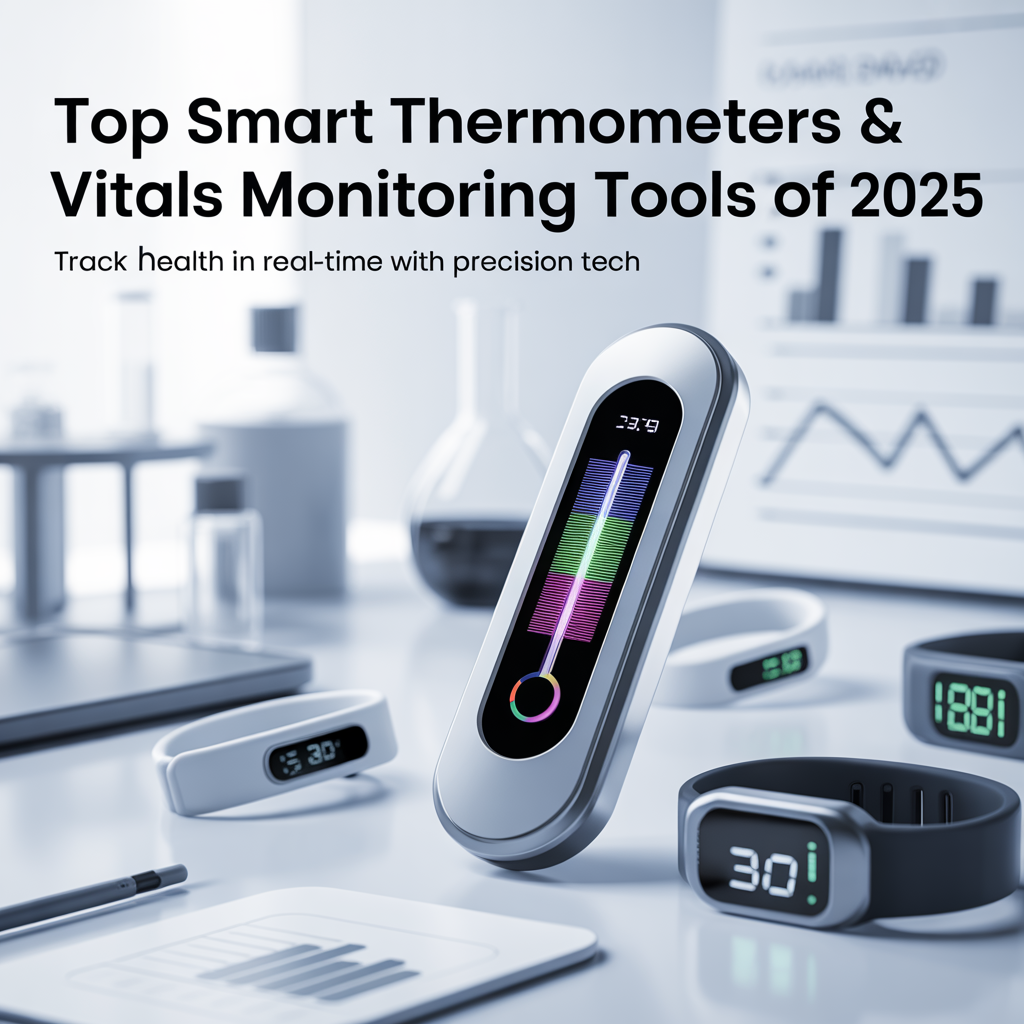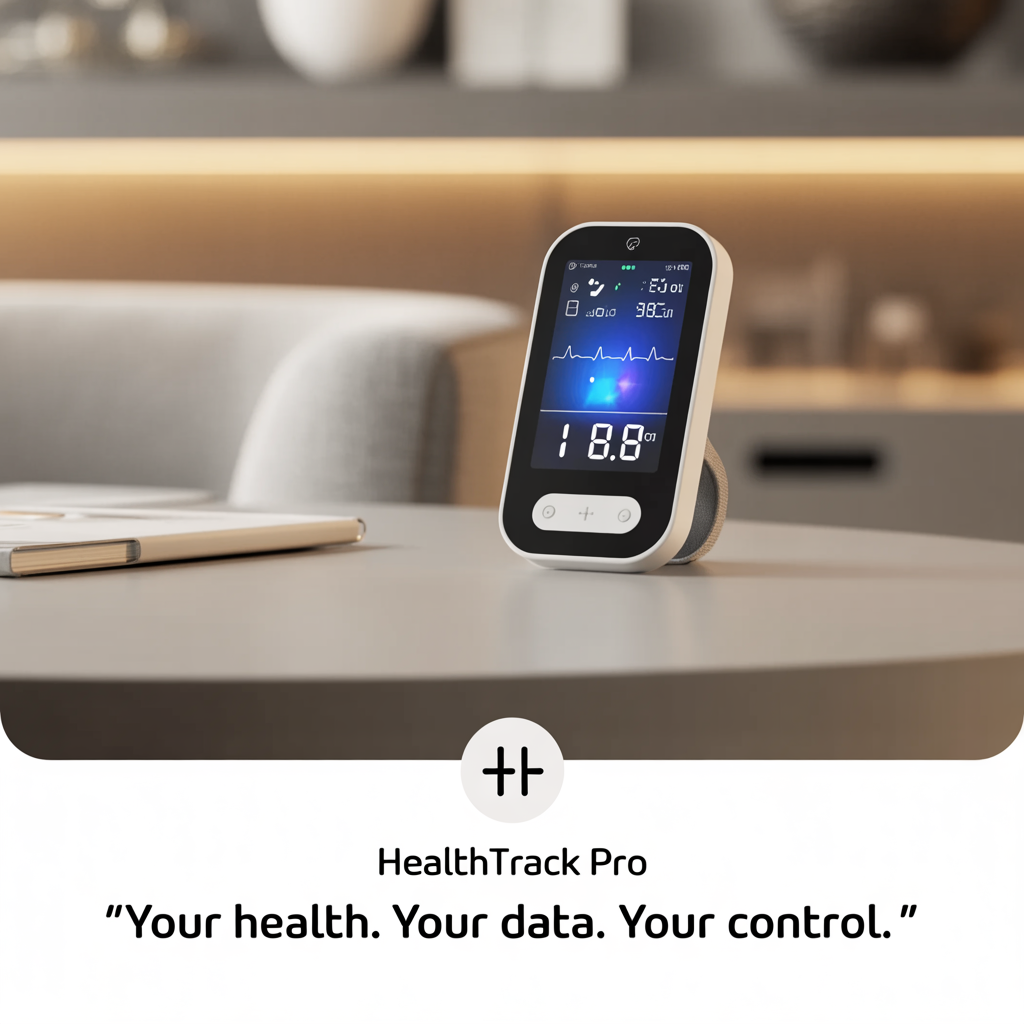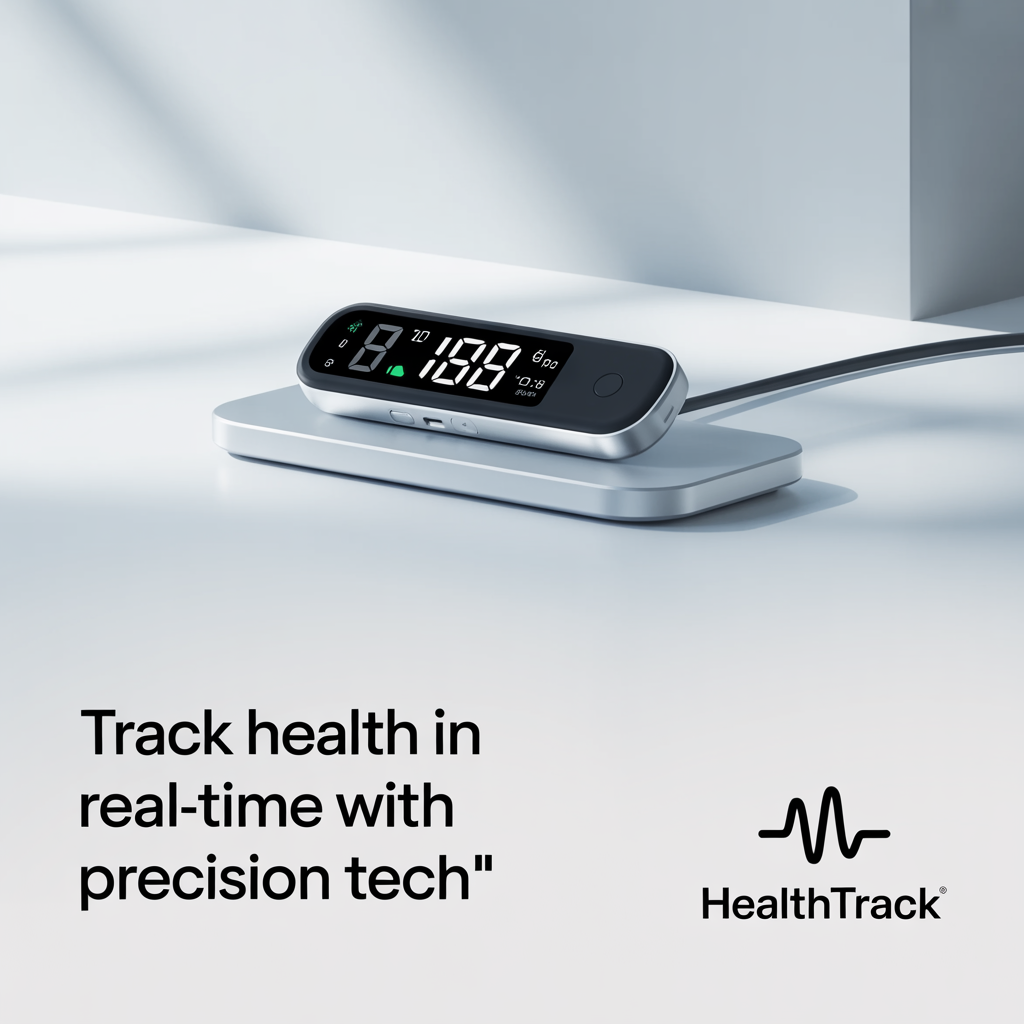
A few months ago, I caught my first fever in years while juggling remote work and marathon training—cue panic. Lucky for me, grabbing my new smart thermometer did more than just confirm a temperature spike. It flagged potential viral symptoms, synced everything to my phone (yes, even in my barely awake state), and even suggested whether to push through my run or take a real sick day. If you’d told me 10 years ago that tracking more than just my temperature would shape daily decisions—how to rest, recover, and even parent—I’d have laughed you off. But 2025 belongs to the health-tracking crowd, and these gadgets do more than beep and blink. Here’s my crash course in smart thermometers and the next-gen health trackers every wellness geek, parent, or athlete needs to know.
My Weirdest Week: Living with a Smart Thermometer (and Loving It)
Last Tuesday at 2 a.m., I woke up feeling like I’d been hit by a truck. You know that feeling—when your body screams “something’s wrong” but you’re too groggy to think straight. Here’s where my smart thermometer 2025 setup became my unlikely hero.
Instead of fumbling around for a traditional thermometer in the dark, I grabbed my Withings Thermo from the nightstand. One quick swipe across my forehead, and boom—102.3°F appeared on my phone screen via Bluetooth. But here’s the crazy part: the app didn’t just show me the number. It immediately started logging symptoms I could barely articulate at 2 a.m.
The fever reading triggered something I never expected from a piece of tech. My phone buzzed with gentle nudges—not annoying medical alerts, but surprisingly thoughtful prompts. “Hydrate with 8 oz of water now.” “Rest recommended for the next 4 hours.” And get this: when my temperature spiked to 103.1°F around 4 a.m., the app suggested I call my emergency contact if it climbed higher. It even offered to draft a text to my mom (okay, maybe calling Grandma wasn’t far off).
The Data Detective Work
What really blew my mind happened over the next few days. As I recovered and got back to my normal routine of family health monitoring, I started noticing patterns in my health data that I’d never connected before. My heart rate tracker, which I’d been using for months, showed something interesting when I overlaid it with my temperature readings.
Every single time my stress levels peaked—and I mean really peaked, like deadline-induced panic mode—my core temperature would drop slightly the next day. Was it coincidence? Maybe. But research shows that individual data trends help spot early illness not captured by single measurements, and suddenly I was seeing my body’s early warning system in action.
I started tracking both stress and temperature religiously. When I’d track heart rate during those high-pressure work days, I could literally predict when my body would need extra rest. It’s like having a personal health crystal ball, minus the mystical nonsense.
“Tracking vitals at home isn’t just a tech gimmick; it’s become an essential part of proactive family wellness.” – Dr. Mia Harper, Digital Health Expert
The device-app nudges weren’t just giving me raw data—they were actually changing my behavior. When the app reminded me to hydrate, I actually did it. When it suggested rest, I listened. That’s the difference between smart health tech and just another gadget collecting dust.
Now I’m that person who checks their temperature trends before big presentations, tracks correlation between sleep quality and morning temps, and yes, I’ve even started sharing the data with my family. My weirdest week taught me that sometimes the most valuable health insights come from the patterns we’d never notice without the right tools paying attention for us.

Vitals 101: What Should You *Really* Be Tracking in 2025?
Let’s be honest—I used to think vitals tracking was just for when you’re sick. Pop a thermometer under your tongue, maybe check your pulse if you’re feeling weird, and call it a day. But 2025 has completely flipped that script. The best vitals monitoring device options now give us insights that go way beyond “am I running a fever?”
The Core Four (Plus Some Game-Changers)
Sure, we’re still tracking the basics: temperature, heart rate, respiratory rate, and SpO₂ (blood oxygen saturation). But here’s what’s different—these aren’t just sick-day metrics anymore. Your resting heart rate can tell you if you’re overtraining. Your oxygen levels might reveal sleep issues you never knew you had. And temperature? It’s not just about fever detection; it’s about understanding your body’s natural rhythms.
Research shows that smart devices now offer clinically relevant trending and warnings for multiple vital signs at home, which means we’re getting hospital-quality insights from our living rooms. Pretty wild, right?
HRV: The Fitness World’s New Obsession
Heart rate variability is where things get really interesting. This isn’t just your heart rate—it’s the tiny variations between each heartbeat. Sounds nerdy, but it’s actually pure gold for anyone serious about fitness or recovery.
“HRV tells me more about my readiness for a big workout than any single number ever could.” – Jessie Tran, Marathon Coach
The wearable health tracker devices I’ve been testing show HRV as a readiness score. Low HRV? Maybe skip that intense HIIT session. High HRV? Your body’s probably ready to push harder. It’s like having a personal coach that never sleeps.
Family-Friendly Tracking That Actually Works
Here’s where modern biohacker tools really shine: custom user profiles. No more confusion about whose data is whose. My eight-year-old’s normal temperature range is different from mine, and his heart rate during “rest” (if you can call it that) looks nothing like an adult’s.
User profiles for different family members or fitness levels prevent data confusion—something that was a massive headache with older devices. Now my wife can track her recovery metrics, I can monitor my training load, and we can both keep tabs on the kids’ health without mixing up the data.
Beyond the Obvious
Some devices are even tracking metrics I never thought about: skin temperature variations throughout the day, breathing patterns during sleep, and stress indicators through tiny changes in heart rhythm. It’s not about becoming obsessed with numbers—it’s about understanding patterns.
The real magic happens when these devices start learning your baselines. Your “normal” becomes a personalized reference point, not some generic medical chart. When something’s off, you know it before symptoms even show up.
What surprised me most? How much these insights changed my daily decisions. Higher stress reading in the morning? I’ll try some breathing exercises. Recovery score looking rough? Maybe I’ll prioritize sleep over that late-night Netflix binge.

Not Your Parent’s Thermometer: Inside the Top Smart Devices of 2025
Remember when taking your temperature meant holding a glass thermometer under your tongue for what felt like forever? Those days are officially over. I’ve been diving deep into the world of smart vitals monitoring, and let me tell you—the best vitals monitoring device options in 2025 are nothing short of revolutionary.
From the playful (Kinsa for kids) to serious sleep hacking (Wellue O2Ring), there’s literally a tracker for every need. And trust me, I’ve tested enough of these gadgets to know the difference between marketing hype and genuine innovation.
The Family-Friendly Champions
The Kinsa Smart Thermometer has turned fever checks into something my niece actually looks forward to. Picture this: bedtime with a kid who thinks the thermometer’s an alien scanner that beeps when it’s done “scanning for germs.” The Bluetooth syncing means no more scribbling temperatures on sticky notes—everything goes straight to the app.
Meanwhile, the Withings Thermo takes the contactless approach with its 16 infrared sensors. I’ve watched parents use this on sleeping toddlers without waking them—pure magic for exhausted parents at 3 AM.
The Sleep Optimization Squad
Here’s where things get interesting for serious biohackers. The Wellue O2Ring isn’t just a SpO₂ monitor—it’s a window into your overnight recovery. I’ve been wearing mine for weeks, and the continuous pulse oximetry data reveals patterns I never knew existed in my sleep cycles.
Research shows that wearables now blend aesthetics, comfort, and vital tracking like never before, and the Oura Ring Gen 3 proves this perfectly. It’s sleek enough for boardroom meetings yet sophisticated enough to track heart rate variability, temperature trends, and recovery metrics.
The All-In-One Powerhouses
The Fitbit Sense 2 represents everything I love about modern digital wellness devices. Temperature tracking, stress monitoring, SpO₂ readings—it’s like having a mini health lab on your wrist. And honestly, smartphone app integration is as important as measurement accuracy these days.
For budget-conscious health enthusiasts, the iHealth Smart Vital Monitor delivers clinical-grade readings without breaking the bank. It’s become my go-to recommendation for anyone wanting a reliable home temperature monitor that doesn’t compromise on features.
“The best health tracker is the one you’ll actually use consistently—bonus if it sends reminders to your phone (or your spouse!).” – Raj Mehta, Wellness Coach
The Reality Check
Contactless and wearable options make day/night monitoring easy—and maybe even fun. But here’s what Amazon reviews won’t tell you: the learning curve varies wildly. Some devices sync flawlessly, while others require patience and multiple app permissions.
The key is matching the device to your lifestyle. Night shift workers need different features than weekend warriors. Parents prioritize ease of use over advanced metrics. And serious biohackers want every data point possible, even if it means charging another device nightly.

Wild Card: If My Smart Thermometer Could Give Life Advice…
Okay, picture this: I’m checking my temperature one morning, and instead of the usual “98.6°F,” my smart thermometer buzzes with: “Take a nap, you’re cranky.” Or better yet, “Time for a gratitude meditation—your stress levels are through the roof.”
I know it sounds ridiculous, but honestly? I’d probably listen. There’s something about getting advice from a device that’s literally measuring my insides that feels… legitimate. Like, this little gadget knows me better than I know myself some days.
The truth is, our current digital wellness devices are already nudging us toward better habits. My fitness tracker reminds me to stand up. My sleep monitor suggests I wind down earlier. These gentle tech nudges—even the silly ones—actually work because they’re consistent. They don’t forget. They don’t get tired of reminding us.
But what if we took it further? What might a future emotional thermometer actually look like? I’m imagining something that reads not just my body temperature, but my cortisol levels, heart rate variability, maybe even vocal stress patterns. Research shows that expectations from smart health tech will only grow, and mood tracking might genuinely be our next frontier.
The Emotional Health Revolution
We’re already seeing hints of this with advanced biohacker tools that track HRV and stress markers. The Oura Ring measures my body temperature fluctuations and somehow knows when I’m getting sick before I do. My WHOOP strap tells me when I’m recovered enough for a hard workout or when I should take it easy.
But imagine if these devices could detect when I’m about to have a meltdown at work, or when I’m pushing too hard and need to slow down. “Hey, your micro-expressions suggest you’re overwhelmed. Maybe try that breathing exercise?”
“It’s not impossible—emotional health monitoring may just be around the corner.” – Dr. Zuri Monroe, Behavioral Tech Innovator
Dr. Monroe might be onto something. We’re already tracking sleep stages, menstrual cycles, and recovery metrics. Why not emotional patterns?
The beauty of these hypothetical smart alerts isn’t just the technology—it’s the permission they give us to actually care for ourselves. Sometimes we need that external validation, even if it comes from a thermometer, to prioritize our wellbeing.
Sure, my current smart thermometer can’t tell me I’m being too hard on myself. But the fact that I’m even thinking about it means we’re heading toward a future where technology doesn’t just monitor our health—it actively nurtures it. And honestly? I can’t wait for that conversation with my emotionally intelligent thermometer. It’ll probably have better life advice than most humans I know.
Until then, I’ll settle for the gentle reminder to drink more water. Baby steps, right?
TL;DR: Smart thermometers and advanced vitals trackers aren’t just hype. They empower you—whether you’re a parent, athlete, or wellness biohacker—to spot trends, act early, and live healthier using real-time data. Ready to keep your family (and yourself) a step ahead? Dive into the best devices of 2025 and see why real-time tracking is the new health non-negotiable.


